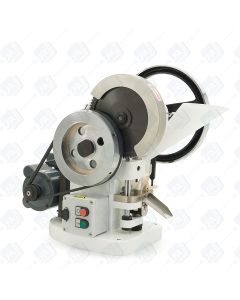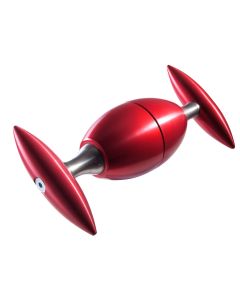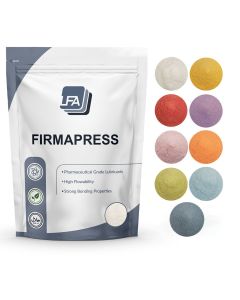Case Studies in Capsule Filling
This article describes some case studies carried out by the company Capsugel that illustrate how performance, effectiveness and productivity can be improved in a modern pharmaceutical company. Capsugel is an internationally leading company that designs, develops and manufactures a wide range of innovative dosage forms for the biopharmaceutical and consumer health and nutrition industries. With more than 4,000 customers in over 100 countries, Capsugel builds on a track record of over several decades to create novel, high-quality and customized solutions that align with customers’ evolving needs, thereby benefitting patients and consumers.
It is a fact that the ground rules for product development and production in the pharmaceutical and health and nutrition industries have changed. As both brand and generic companies struggle to improve their product pipeline and to address the needs of new patients, these companies must also meet the growing productivity demands in manufacturing.
The ever widening product selection available directly to customers has meant that manufacturers need both to increase production and continually improve performance. These new rules have forced companies to focus on ‘cost leadership’. In the past, an important aspect of cost efficiency has been the cost of the raw material. Although focusing on the acquisition of raw materials is still important, it may not deliver sustainable cost leadership particularly as low cost materials can compromise the product performance. A better approach is to consider ‘total cost in use’ in which the cost of manufacturing plays a key role.
Capsugel, as one of the leading suppliers of empty capsules for the pharmaceutical industry has an in-depth knowledge of their customer base with a wide variety of capsule filling equipment and an extensive range of filling ingredients. Capsugel can attest that profitability and manufacturing can be done with the right mixture of the formulation, capsule and filing equipment. Optimizing the manufacturing process to exploit fully the integrity of the capsule and consistency makes sense. Understanding the influence that each one has can help prevent problems during development and lead to improved efficiency and greater productivity.
Capsugel technical service team continually requests for feedback from customers on equipment purchase for fill products, process flow evaluation and personnel training to complete the productivity loop. With this insight, the company is able to determine cost savings with recommended improvements using ‘Savings Reports’ that are based on total cost-in-use.
Zapisz się do naszego newslettera
Fundamental Manufacturing Costs
Manufacturing costs are mainly driven by the cost of raw material, product manufacturing time and expense and the yield, i.e., the quantity of finished products as a function of the starting materials.
The raw material costs includes the cost of the material itself as well as the different tests conducted to ensure the formulation content, safety and effectiveness. Cost savings can be realised by working with reliable suppliers that have established and certified quality testing methods. Working with a reliable vendor can reduce the cost of testing which can increase lead-time, lower inventory levels, free up working capital and lower holding costs such as insurances and taxes.
Case Study – Reduced Test Savings through Certified Vendors
A large multi-national pharmaceutical company certified Capsugel as a vendor which enabled the company to take advantage of Capsugel’s raw material testing services. The company realized significant, both initial and recurring, annual cost savings of $119,405, including services such as sample collection, inventory-related savings and testing expense.
A New Look on Capsule Filling – Speed vs. Yields
The old phrase “Time is money” continues to apply in today’s demanding businesses. To deliver a finished product a company has to pay for labour and utilities, the cost of which can fluctuate depending on the volume produced – along with other fixed costs such as rent and insurance. When more products are produced, manufacturing cost is less using the same equipment and people as before. Note that time to manufacture can be broken into two controllable variables – uptime and equipment throughput.
In the business of capsule filling, it is the filling of capsules that accounts for most of the cost of the encapsulated product rather than the cost of the empty capsules. For this reason, despite the correlation between machine speed and cost, increasing production yield has been the main objective of capsule-filling operations. Savings generated from improved yield are the result of reduced losses of staring materials as well as the time and energy conserved in producing fewer filled capsules that cannot be sold. Consequently, even a small improvement in yield production can have a financially significant impact.
In a review conducted by the Capsugel Technical Service team, an increase of 2/3 yield resulted to an incremental 2 to 4%. Although some changes are conducted using complex solutions, the majority saw the importance of training personnel as well as maintenance of the filling equipment.
Case Study
Company A was experiencing poorly joined capsules on their intermittent motion capsule-filling machine for one of its products. Internal inspections of the problem caused loss of production time and consistently low yield. Upon review by the Capsugel Technical Service Engineer, the setup of the closing station was targeted for improvement. The height of the counter bearing and timing of the movement was adjusted to correct the conditions causing poor joining of capsules. The adjustment resolved the issue. As a result, production downtime due to internal inspection was eliminated, yield was improved by more than 8%, and the company saved $94,000 annually for production of this one product.
Increasing Speed to Increase Profit
In a study conducted by Capsugel, a not-so-obvious conclusion was discovered: the total cost/savings return associated with increased machine speed is higher than that for yield increase. Thirty customers involved in capsule-filling were tracked and, with the assistance of Capsugel Engineers, charted the cost savings of capsule filling productivity or efficiency based on costs associated with machine speed, yield, and downtime. The average productivity savings of $91,560 per company annualizes to a total combined aggregate savings of about $2.747 million.
The combined savings exceeded the total annual cost of empty capsules.
The savings support the conclusion that improving the capsule filling efficiency is well worth the effort. In particular, increases in machine speed accounted for 61% of total financial impact. At the individual customer level, machine speed increases averaged approximately 14,000 capsules per hour.
The absence of faster throughput is often the by-product of other manufacturing circumstances as illustrated in the case study below.
Case Study
Company B invited Capsugel to assess its capsule-filling operation. The technical service engineer noted that the company was running below the rated speed of their capsule-filling machine. The limiting factor was the non-separation of capsules at higher speeds. Upon investigation, the engineer discovered that the vacuum pump was inadequately sized for separation of the capsules at the higher speed. Once corrected, the speed was increased by 83% resulting in a financial impact of $365,000 annually.
Such cases raise the question of why there is such a large difference in realized savings when speed improves, when compared to yield improvements. The fact is that attention is at last being given to capsule filling machine speed, and companies are now understand better how to improve machine speed. Yield losses and their financial impact have routinely been a focus of manufacturing teams. As the subject of daily production meetings, yield losses are front and center with management. Machine speed compromises have tended to be more accepted remedy for yield loss, obscuring the real financial impact of running a machine below its capacity. Today, more companies are discovering how higher throughput can have a greater impact on a company’s financials than demonstrated thus far. While greater throughput enables better use of variable labour and utility costs, it also gives a company greater manufacturing capacity within the same machinery footprint. Maximizing available capacity enables growth without additional capital expenditure on equipment.
Reducing Downtime Increase Profitability
Aggregate data collected by Capsugel shows that reduced downtime leads to substantive savings. The numbers among 30 cases reflect only a small number of instances in which downtime was reduced by 1 to 2 hours (per 8 hour shift basis), and may not reflect the potential savings through continued technical consultation. In the following case study, the dramatic reduction in downtime was discovered through the implementation of preventative maintenance.
Case Study
Company C was plagued with excessive downtime on one particular sticky product. The Capsugel Technical Service Engineer listened as the company explained that due to the nature of the product, the segments had to be cleaned frequently to avoid issues with capsules fitting into the segments causing capsules not to separate. This resulted in significant delays. The Capsugel Technical Service Engineer designed and implemented an ejection brush cleaning system to remove build up while the machine was running. It greatly reduced the needed frequency for cleaning, resulting in $32,000 in downtime savings annually for this product.
Quality by Design and its Impact
Thinking and planning ahead during early setup stages can often achieve the best productivity. Quality is built into a product by delivering the optimal set of circumstances to avoid problems during the process of delivering the product to the market. The concept, known as Quality by Design, is well known in quality improvement circles and is the foundation of Six Sigma methodologies. First pioneered by Joseph M. Juran, Quality by Design asserts that quality can be planned and that encountered problems are related to how the quality was planned from the outset. Understanding dosing options and powder characteristics can prevent pitfalls. To achieve capsule-filling efficiencies via Quality by Design, there are various capsule-filling technologies and dosing styles available on the market to be considered. Each style has its own benefits and limitations. Manufacturing efficiency and profitability lie at the intersection of the formulation, equipment and the capsule. Understanding the different types of dosing options, and the powder characteristics that work best with each technology helps prevent potential development pitfalls. For example, a sticky powder that is hard to compact may not work well in a tamping technology. Sometimes powder flow characteristics may not match the equipment, and it may be necessary to apply Six Sigma standards to optimize the outcome as shown in the following case study.
Case Study
A manufacturer was receiving a growing number of consumer complaints about capsules that had a bitter taste. During manufacturing the capsules were joining poorly and the bitter powder was coating segments of the tamping machine, resulting in low yields. The root cause analysis showed a sticky and gritty powder that the machine was not adequately compacting for dosing. To achieve the desired fill weight, the capsules were filled beyond their capacity. The poorly formed slugs and undersized capsules resulted in powder loss into the segment which interfered with closing and left residual powder on the capsules resulting in the bitter taste. Capsugel engineers improved the compaction by adjusting the equipment to form a better slug, thereby drastically reducing powder losses. As a result, the yield improved by 10% with less downtime for cleaning, and the speed of the equipment could be increased by 25% without sacrificing weight control. For the annual volume, the savings were nearly $1 million and patient complaints dropped dramatically
Measurement – Why it is Crucial for a Company’s Success
The famous Scottish physicist Lord Kelvin once said, “If you cannot measure it, you cannot improve it.” This quote not only applies to science and mathematics but also to today’s businesses. Knowing how to measure the driving force behind a business is the key to increasing profit.
Capsugel can now provide a comprehensive capsule-filling efficiency “savings” report that calculates the total business impact based on specific improvements in capsule-filling machines and processes. It shows how an adjustment, a repair, or a replacement will affect speed, yield, downtime – and the bottom line. Historically, capsule-filling manufacturing metrics concentrated on machine-related end-points, such as minutes of downtime or pounds of waste at various parts of the machine. Now, by adjusting these metrics to incorporate and demonstrate the associated real-world cost impact, customers are better able to justify their remedies and plans. They are better equipped to build the business case necessary to obtain the resources and focus to drive productivity improvement in their capsule-filling operations. The following case study illustrates the point.
Case study
Company D experienced various defects after encapsulation. Capsugel’s engineer quickly identified that the segments on the machine were excessively worn and needed replacement. He worked with the production team of the company and utilized Capsugel's Capsule Filling Efficiency Report to show the complete financial benefit of replacing the worn segments. The financial impact of the losses far exceeded the cost of replacing the segments. Armed with the business case, the production team justified the cost of replacing the parts with their internal stakeholders.





